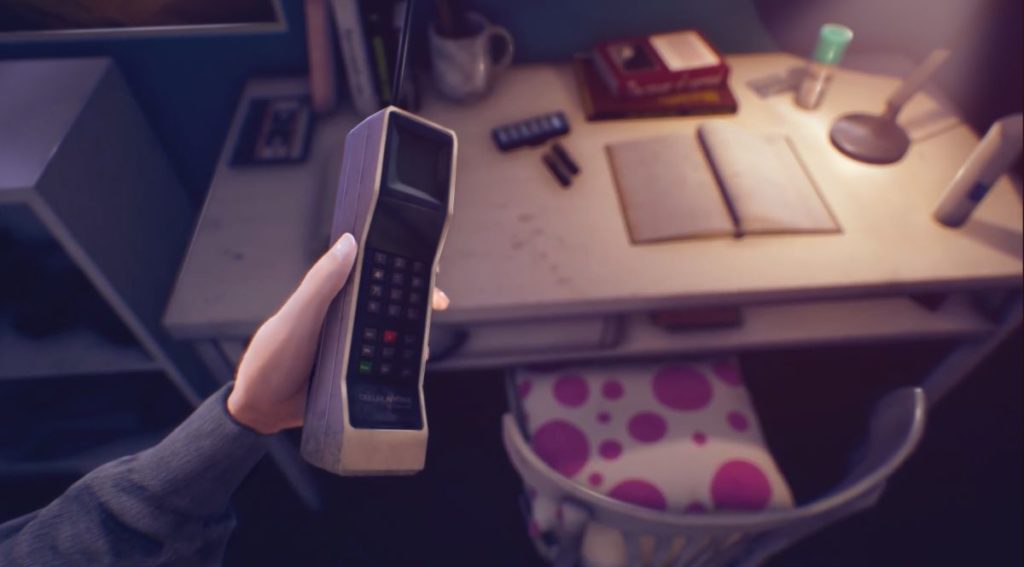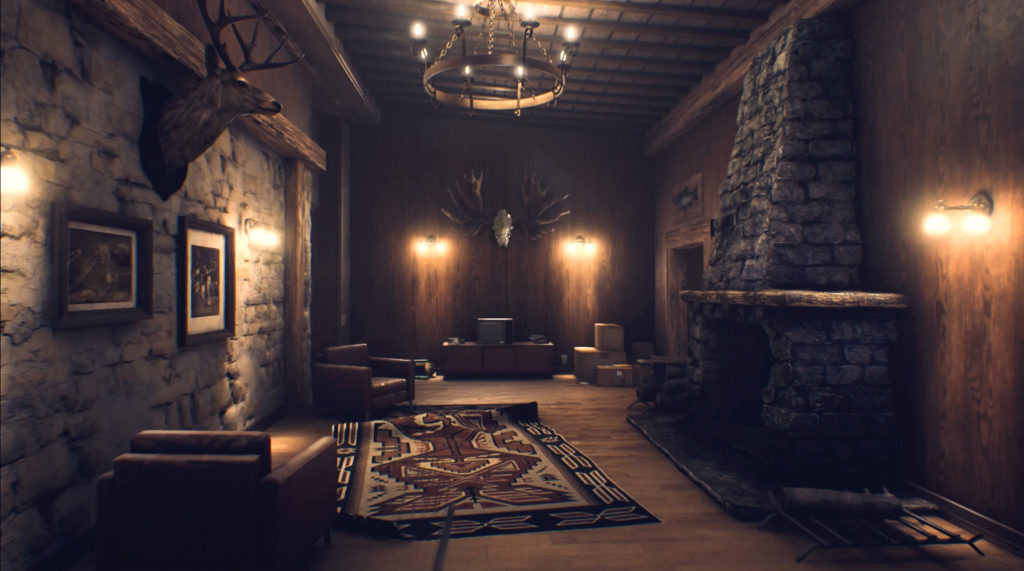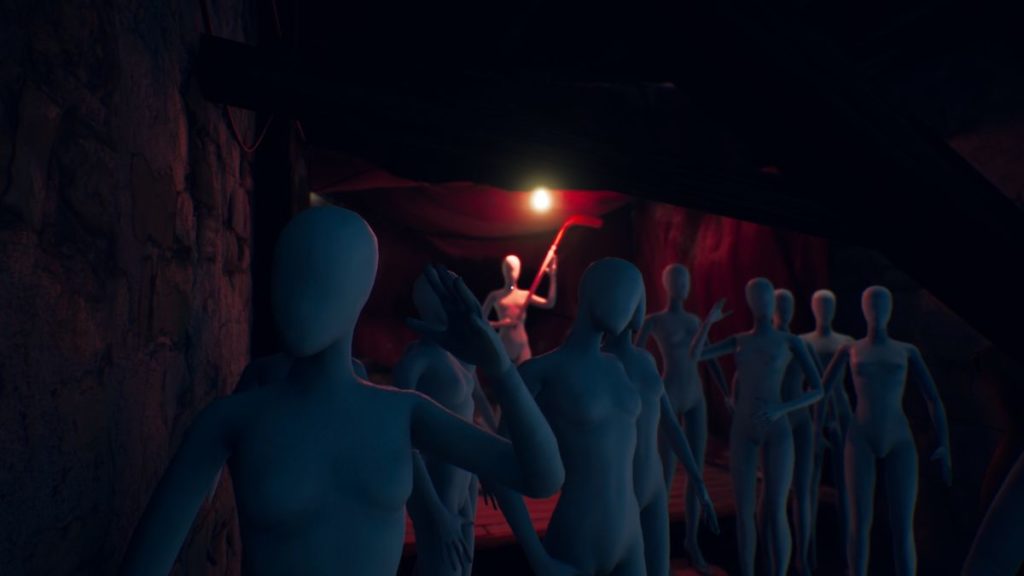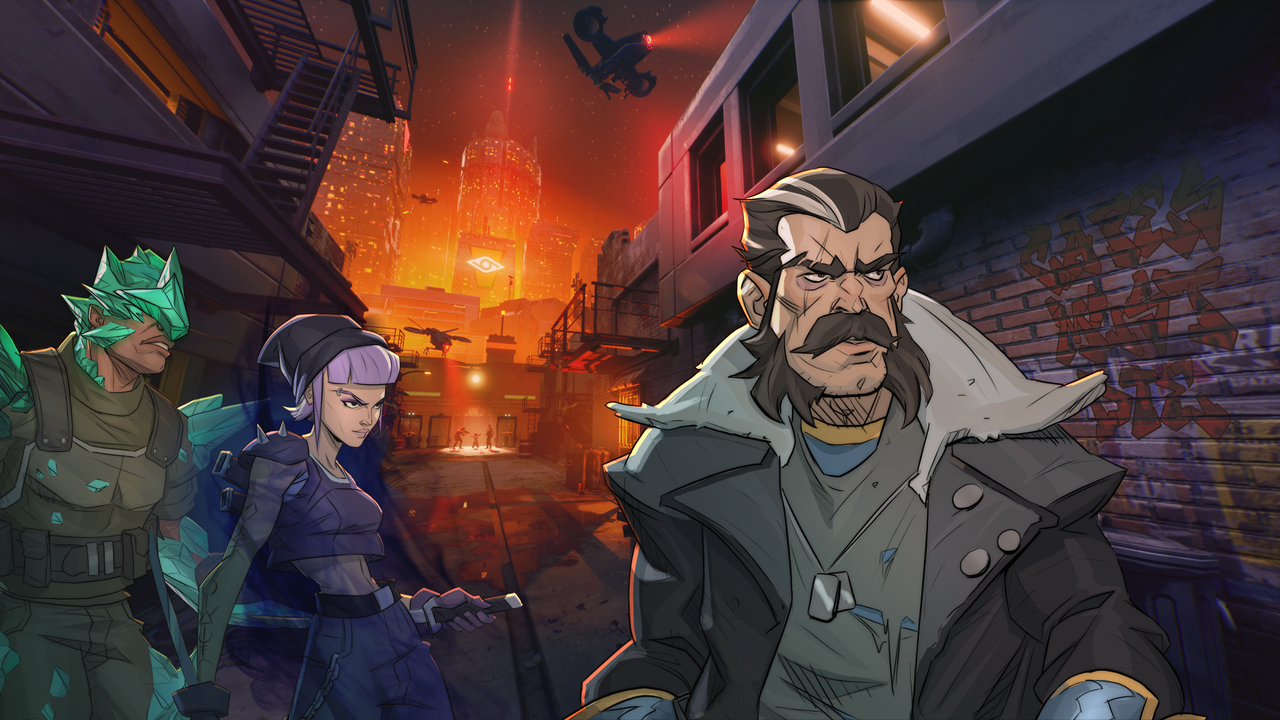The Suicide Of Rachel Foster (PS4) Review – The Overlooked Hotel
Walking simulators have got a lot to answer for. Before the likes of Gone Home, Firewatch and That Dragon, Cancer came along, we’d been so used to mowing down indiscriminate waves of aliens or questionably-motivated terrorist types without getting any of “the feels”. Take away our guns and make us sit through emotionally charged experiences, though, and we’re not ready for it. Oh, you can pretend you are, but there’s always something in these games that hits the right sad spot and that’s it, you’re off.
The Suicide of Rachel Foster is no different, and that’s a good thing. Well, it’s not, when I actually get into the story, but on the whole it’s great to experience something that makes you feel human, for better or worse, from time to time.
Now, I have to say this as a disclaimer (much as the game does on its intro screen) that there are strong themes of grooming and possible child abuse in the game, and as such, will be touched upon in the review. I won’t leak any major spoilers, but it’s the setting and theme that runs throughout the game. So, prepare thyself, as we go back to the past…

It’s Dangerous To Go Alone
Our story begins with our protagonist, Nicole, making her way back to the Timberline hotel (named after the real life lodge that whose exterior was used as The Shining’s Overlook Hotel). Not after a holiday or anything, but having not stepped foot in there in the last ten years. Inheriting the property from her now-deceased parents, Nicole has to make the arduous journey back to the neglected hotel to get all the paperwork and affairs in order to sell it on.
She’s picked the worst time for it, though, as the nastiest of blizzards has made its way to the mountains, effectively trapping her against her intentions in the hotel. You see, Nicole has bad memories about this place (which we’ll get into) and doesn’t want to be here any longer than she has to. Unfortunately, the weather isn’t at our protagonist’s mercy and will continue to snow regardless of her affiliation with the building.
Luckily, our reluctant heroine isn’t alone, as a FEMA agent named Irving from the nearby town is on the other end of the “high tech mobile communication device” Nicole has to hand (this game is set in 1993, give them a break). Irving is more clued up on events of the hotel in the last ten years, what with it being the talk of the town for all the wrong reasons, yet is initially reluctant to go into it with Nicole…
For the most part, the interaction between these two acts as our exposition into the events that rocked the Timberline all those years ago.

That Cold, Fateful Night…
The terrible thing in question is Nicole’s father having an extramarital affair with the local pastor’s daughter. The daughter who was sixteen at the time, and discovered to be nine weeks pregnant when the body was found sometime later.
The titular Rachel Foster was a musically talented girl, but suffered from dyslexia, and was being tutored by Leonard McGrath, Nicole’s father. This tuition led to infatuation, which rocked the foundation of the McGrath’s marriage, causing wife Claire to take Nicole and leave the hotel for good. Reputation in tatters, the hotel soon followed suit and fell into disarray over the years that followed.
It rocked the town, too, eventually leading to tabloid scandal and Leonard McGrath being branded a paedophile, living out the rest of his days in the isolated west wing of the now-closed Timberline.
That Nicole has to come back here is nothing short of pleasant, as evidenced by the disdain in her voice from the get-go. Referring to her father by first name shows her hatred for him, for what he put her and her mother through, and stirring up the thoughts of jealousy she had towards Rachel before the affair was revealed.
The subject matter isn’t a pleasant one, yet it’s framed in a way that you want to discover more of why Nicole feels the way she does whilst she navigates the once-vibrant halls of her family’s hotel.

You Hear That…?
Gameplay is fairly straightforward, so don’t expect some massive, Resident Evil puzzle-style backtracking. The Timberline is pretty vast, with the hardest aspect of gameplay being trying to remember which corridor leads to where. You do get a map, but it doesn’t offer a player marker, so you have to rely on your own noggin to pinpoint where you are.
There’s no nefarious, Resident Evil-style backtracking and obtuse puzzle logic here, though. Irving acts as your tour guide/navigator, and events play out in a fairly linear manner. But then, TSoRF is an experience to play, it’s not trying to compete with The Witness or anything.
You walk through corridors and various rooms when the game demands, occasionally grabbing key items and waiting for the next day of exposition to come forward. Much like Cole Phelps from LA Noire, Nicole isn’t clairvoyant, so she isn’t to know exactly what each and every key item is. So whilst you can pick up and investigate a varying degree of item, a lot of them serve absolutely no purpose other than to make us go, “Oh cool, they’ve rendered that NASA mug really well”.
Yet whilst it may appear boring in terms of what to do, the game’s biggest strength is in its sound design. As you may expect from a neglected building, timber structures creak, windows rattle and walls groan under the relentless weather hammering from every angle. There are no supernatural, other-worldly elements here… but you’d be hard pressed to believe that with the noises going on.
For an even more immersive experience, wear a pair of headphones whilst you explore. Much like Hellblade: Senua’s Sacrifice, The Suicide of Rachel Foster makes amazing use of binaural audio to really captivate that niggling feeling that you might not be alone in this massive, derelict building. Honestly, I tried it for about an hour late one night, and that was a mistake.

Let Me Tell You My Story
The inherent problem with reviewing a game like The Suicide of Rachel Foster is that I can’t really go in depth about the plot, because that’ll spoil it. I could give it the whole: “Is Irving who he really is?”, “Is Nicole actually the embodiment of Rachel Foster, come back for her revenge on the man that allegedly groomed her…?”.
Obviously not, those are just red herrings. I’ve already said enough by saying that aren’t any supernatural elements here. But even then, that’s like someone saying, “You’ll love the twist in this movie” so that you already expect a twist going in. I won’t do that to you.
Of course, that also means I have to try and recommend you a game I can’t really tell you much about. Here’s hoping this review at least piques your interest rather than turn you away from it.
However, I can see why “walking simulators” aren’t for everyone. There’s no speedrunning challenge here, this is an immersive title that wants you to take your time. Or at least, I hope that was the intention, because even Nicole’s sprint is still ridiculously slow. Even walking pace is painful. One O One Games haven’t rendered her legs, so for all I know, she’s got a leg brace on. Certainly feels like it when you’re trying to get a pace on.

Things That Bug In The Night
That being said, The Suicide of Rachel Foster doesn’t get a glowing recommendation without a few caveats. Graphically, the game is outstanding, but despite the aforementioned sound design, there are some occasional audio bugs.
On one occasion, the game locked on me because the dialogue started halfway through the game loading, so by the time gameplay caught up and Nicole lifts to receiver to her ear, the conversation had finished. The game didn’t know what to do, and sent me back to the PlayStation’s dashboard.
There were another occasion where I’d worked out where to go, so was on my way there when Irving called to tell me what was needed. Perhaps I was ahead of where the conversation was to be triggered, so as I got there before the call had finished, again I was booted out of to the dashboard. The only checkpoint is the start of each day, and they’re not overly massive, but it was still a mild inconvenience when you’re getting invested in what’s going on.

A Dark, Twisted Tale That Needs Telling
As I said, this is going to get a glowing recommendation from me. The Suicide of Rachel Foster isn’t an overly long game, I think my total runtime was about 6/7 hours (including the occasional soft reset), but that was more trying to finish it for review purposes.
At the end, I had the same feeling I had after watching Requiem for a Dream or Dead Man’s Shoes; that little “Huh…” moment where you want to take yourself off and give yourself a hug. See, I’m not completely cynical and stone-hearted… just mostly.
But I can’t tell you what happens. I know it seems like a shorthand cop-out to be all, “No, you just have to play it”, like I’m skimping on it or didn’t see it through (I did, but I somehow missed two trophies for the Platinum). It doesn’t revolutionise the walking simulator, and if you’re not already on board for this kind of sub-genre, this may not be the most positive starting point. Or, if you’re feeling brave, then by all means start here. Get it done, then come back and tell me your experiences with it.
A dark premise that, like most uncomfortable experiences, deserves to be told. A few technical issues knocked my pacing back slightly, but didn’t stop me from seeing this through.

The Suicide of Rachel Foster is available now on PlayStation 4 (reviewed on), Xbox One and PC.
Developer: One O One Games
Publisher: Daedalic Entertainment
Disclaimer: In order to complete this review, we were provided with a promotional copy of the game. For our full review policy, please go here.
If you enjoyed this article or any more of our content, please consider our Patreon.
Make sure to follow Finger Guns on our social channels –Twitter, Facebook, Twitch, Spotify or Apple Podcasts – to keep up to date on our news, reviews and features.



